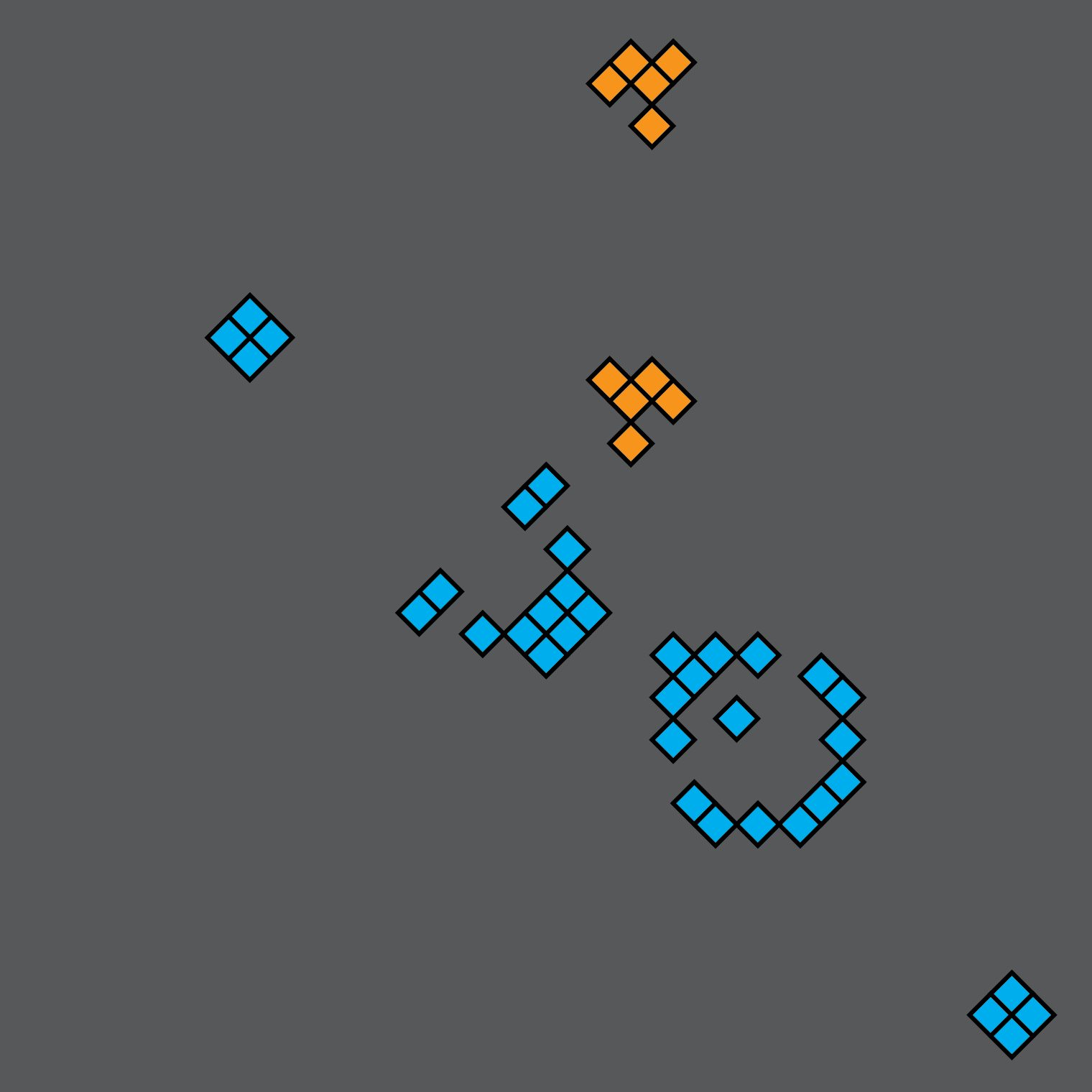Surprising results from simple rules
Understanding complex dynamical behaviours generated by simple rules, such as cellular automata, polyominoes and models of competition.
Most simple rules give rise to simple behaviours. But occasionally they generate surprisingly rich and varied dynamics. Some simple rules, such as Conway’s game of life, are even equivalent to a universal Turing machine and can compute any computable function. But while applying simple rules is easy, deducing the rules from observed behaviour is both important and usually hard, as evidenced by our attempts to deduce the laws of physics through science.
In this project we investigate different families of simple rules for discrete dynamics. We help classify elementary cellular automata by deducing the apparent randomness of their behaviour. We investigate the self-assembly of polyominoes and the reverse engineering of structures made from them. Simple mathematical models of competition help us track the long-term behaviour of competitors and deduce which strategies maximize success.
Reverse engineering simple rules that generate desired kinds of behaviour can help us design efficient algorithms and low-cost methods for assembling complex structures. Understanding which rules give rise to dynamics that are at the border between order and chaos may offer fundamental insights into artificial life and synthetic biology, which have proved elusive.
















Papers in this project
Assessing self-assembly
The information needed to self-assemble a structure quantifies its modularity and explains the prevalence of certain structures over others.
Random cellular automata
Of the 256 elementary cellular automata, 28 of them exhibit random behavior over time, but spatio-temporal currents still lurk underneath.
Single elimination competition
In single elimination competition the best indicator of success is a player's wealth: the accumulated wealth of all defeated players.